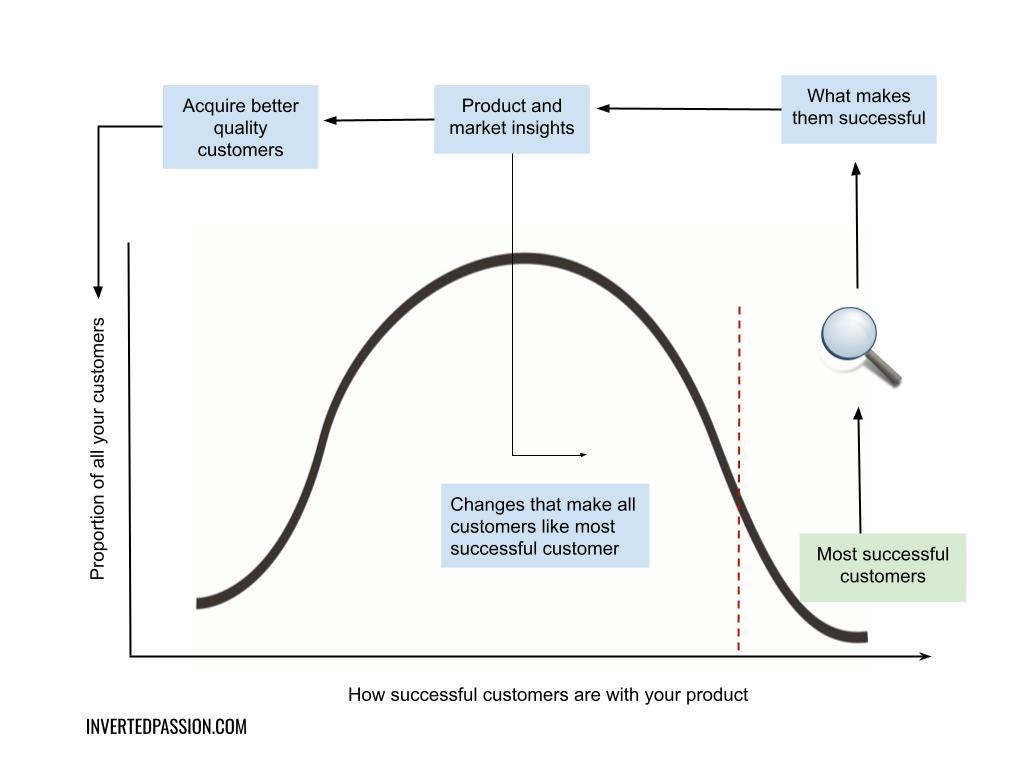Setting product and business direction is actually really simple:
- Study your most successful customers in detail
- Know why are they more successful than other customers
- Take those lessons and tweak your product in a way that nudges all other customers to be a bit more like the most successful ones
- Use your knowledge of the most successful customers to refine your pitch to highlight aspects of your products that your most successful customers get value from.

Your most successful customers are the ones who have by themselves discovered the use cases of your products that give them an enormous benefit. When your customers are working so hard to derive value from your product, your job becomes easy. All you need to do then is to interview successful customers and figure out how to make their valued use cases explicit in your product to other less successful customers.
It is also possible that some customers discover a use case of your product that you never designed your product for. When you discover these accidental use cases, highlight them in your marketing pitch to tap into entirely new customer types.
The definition of “successful customers” differs from business to business, but a good proxy is the time spent using the product. You need to find customers whose actions (not words) reveal that they’re getting a lot of benefits from your product. While interviewing customers, remember to not ask: “what do you like most about the product”. Rather ask them to recall how they use your product. Your customers cannot give you insights on use cases, they can only supply the raw data. But you can infer from repeated patterns of successful use cases and derive insights into why some take that benefit while the rest of the customers don’t.
An example of what studying successful customers can lead to is Facebook’s timeline feature. Before the timeline came along, Facebook users had to visit their friends’ profiles to check what changed in their lives. Like most behaviors, this behavior was also different for different users. Some rarely checked user profiles but others checked them obsessively.
By discovering such obsessive behavior of people checking friends’ profiles several times a day, Facebook realized that perhaps people really like to know what’s happening in other people’s lives.
Facebook took this learning and experimented with automatically surfacing changes in people’s profiles on a timeline. It was a massive success, one that increased time spent on Facebook significantly, and today it is the central feature of all social media platforms.
Of course, the timeline experiment could have failed. The point, however, is that new product feature ideation didn’t happen in a vacuum. Facebook mined for outlier behaviors in its userbase to discover an obsessive use case which was then productized for the rest of the users.
Remember: your most successful customers will use your product in ways you never designed it for. Your job is to polish these “newly discovered” use cases and offer them to the entire market.
This essay is part of my book on mental models for startup founders.
Join 150k+ followers
Follow @paraschopra